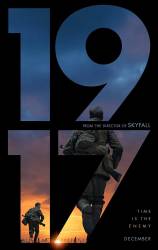Factual error: The strong current of the river the main character falls into carries him to a considerable waterfall. There is not, nor has there ever been, a river of that kind in the Ecoust front line area, let alone a waterfall. Anyone who has any insight into the geography of the region will tell you it is flat as can be. The largest body of water, the Yzer, gently meanders and flows into the Channel, even during really rainy times.
Suggested correction: I do not believe that either Ecoust or Croisilles Wood is in Flanders. Both are behind the old German lines at the Somme. That said, there are no bodies of water in that area.
Ecoust and Croissilles are in department Pas-De-Calais in the French Flanders, together with the Belgian flanders they are called Flanders Fields. It is indeed a flat area.
Also, the message in ink delivered is legible, despite having been submerged in water. And don't get me started about the attack from ridiculous trenches and not a barbed wire in sight.
It's not. Even French Flanders is further north. But, even though there are some high points in the area, like Vimy Ridge that rises to about 500 feet above the surrounding plains, the slopes are quite gentle. And, as you say, wouldn't allow for the kind of drop seen in the movie.
There is a watercourse that goes through Croisilles... But it's basically a ditch.
Factual error: The British medical station is above ground and too close to the front lines. It is well within range of German artillery. Normally, such large open-air stations would be miles behind the front lines. Smaller, underground aid stations would give first aid to the wounded. Then they would move to the larger medical stations.
Factual error: The event starts on April 6th, 1917. While the cherry trees are blooming, all the other foliage looks to be in full summer bloom. (00:37:15)
Factual error: In one scene you can see the bottom of a soldier's boot, and it has a light blue rubber part on it. They didn't make colored soles back during WWI.
Factual error: While crossing No Man's Land an abandoned tank is seen. Tanks were not used on this battlefield until April 9th, 3 days later than the date the film is set. (00:20:10)





